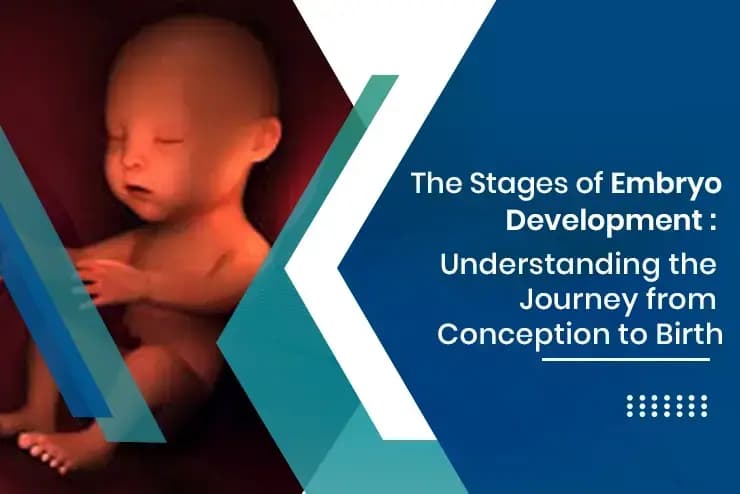Brochure Download

Brochure Download


Understanding the stages of human embryonic development is important for anyone studying embryology, fertility treatments or reproductive science.
The journey of an embryo from conception to implantation is fascinating and complex, yet it is something everyone can appreciate.
This blog is designed to give readers an easy-to-understand guide through the early stages of human life, with a focus on the process that occurs after fertilization.
Whether you are a student, interested in reproductive health, or simply curious to know how life begins, this blog will help you understand the basic principles of embryonic development.
By reading this, you will gain a clear understanding of the stages of development, what happens at each stage, and why this knowledge is important for advancements in reproductive technology
Human embryonic development refers to the process that begins immediately after fertilization and continues until the embryo implants itself in the uterus. These early stages are very important as they lay the foundation for all future growth and development. The entire process usually takes about 5 to 7 days from the moment the egg is fertilized by the sperm
Understanding the stages of human embryonic development is beneficial not only for students of embryology but also for people undergoing fertility treatments such as IVF (in vitro fertilization). Each stage provides information about potential challenges and ways in which science can support healthy development.
Fertilization marks the beginning of human embryonic development. This occurs when a sperm cell successfully merges with an egg cell, resulting in the formation of a zygote. The zygote contains all the genetic information needed for the development of a new individual, half coming from the mother and half from the father.
During this stage:
This stage occurs in the fallopian tube, and it takes about 24 hours for the sperm to penetrate the egg.
The next stage of human embryo development is called division. After fertilization, the zygote begins to divide into smaller cells. These divisions are called "mitotic divisions," which means that the number of cells doubles with each division. However, during this stage, the overall size of the embryo does not change much.
By the end of the division, the embryo has about 16 to 32 cells, known as the morula. The morula looks like a small ball of cells and is still travelling from the fallopian tube toward the uterus.
The embryo reaches the blastocyst stage around day 5. The blastocyst is a fluid-filled structure made up of two types of cells:
The blastocyst is larger than the morula and is the stage that enters the uterus. The fluid-filled cavity within the blastocyst provides space for the embryo to grow.
Before the embryo can be implanted into the uterus, the blastocyst must "hatch" from its protective outer covering, called the zona pellucida. This hatching process is essential because it allows the embryo to attach directly to the lining of the uterus.
Without successful hatching, implantation of the embryo cannot occur, making this a critical stage in human embryonic development.
Implantation is the final stage of early embryonic development. It occurs when the embryo successfully attaches to the lining of the uterus (also called the endometrium). Implantation usually occurs about 6 to 10 days after fertilization.
At this point, pregnancy can be confirmed via a pregnancy test, as the hormone hCG (human chorionic gonadotropin) begins to be released into the mother's bloodstream.
These stages of human embryo development help in various areas:
Implantation normally occurs between 6 and 10 days after fertilization.
The blastocyst stage is the stage when the embryo forms a fluid-filled cavity and begins to differentiate into the cells that will form both the baby and the placenta.
Hatching allows the embryo to break out of its protective shell, attach to the uterus, and begin the process of implantation.
In IVF, embryos are often transferred to the uterus during the blastocyst stage, after fertilization and early development have taken place in the laboratory.
The stages of human embryonic development, from conception to implantation, are essential to life. Each stage – fertilization, cell division, blastocyst formation, hatching and implantation – plays a special role in ensuring that the embryo develops correctly and the pregnancy is successful. This information is helpful for students, doctors and people undergoing fertility treatment. By learning about these stages, we can better understand the complexities of human life and the amazing advances in reproductive technology.
SCHEDULE A CONSULTATION
Book Your Appointment!No recent blogs this month.